Why are fish for export from Akasaka Fisheries processed by Tsumoto style?

Hello, this is Akasaka Fisheries. We export a lot of fish mainly to the United States.
We grow the sea bream eating our original feed mixed with white sesame seeds. The sesamin nutrient accumulated in the fish keeps them tasty and fresh. Furthermore, it keeps our customers healthy. We named this epoch-making sea bream “Hakuju Madai”(Longevity sea bream)
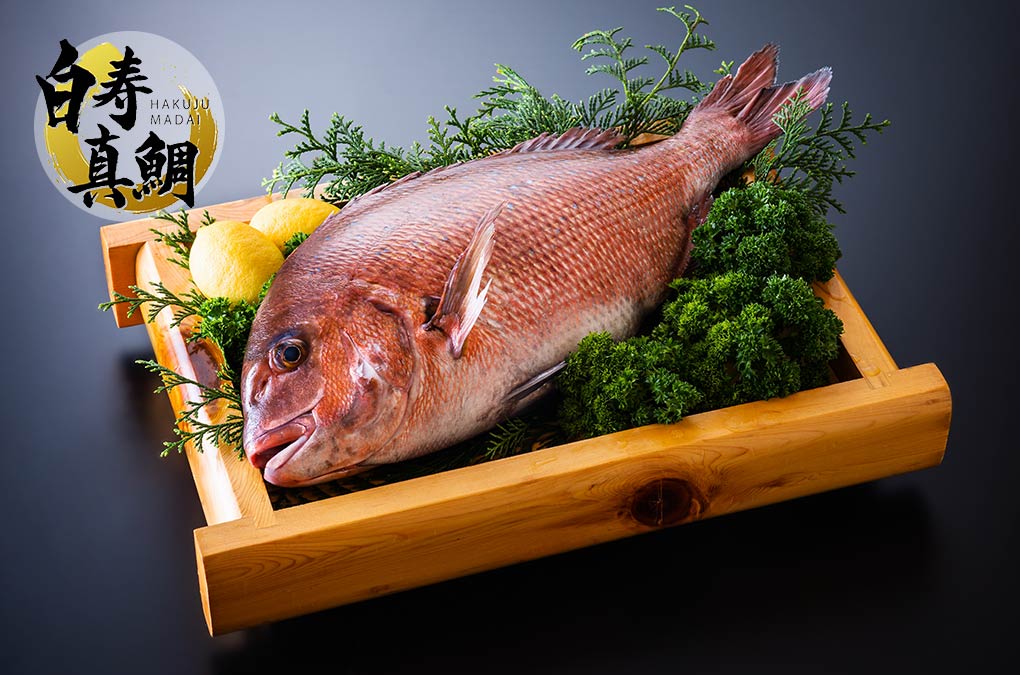
As the largest aquaculture company in our prefecture, we carefully select flounder that is safe, attractive, and the thickest in Japan. That is “Yokozuna Hirame.” (Grand champion sumo wrestler flounder)

These fish distributed by us are processed with a special de-blooding method called “Tsumotoshiki(means Tsumoto style)”. The fish processed by this method are reputed to be delicious, even though they have been dead for more than a week due to the export.
This is why today, I would like to introduce Tsumotoshiki and explain it as follows.
✓What is the Tsumotosiki?
✓How to Tsumotoshiki
✓Why is it ideal for export?
What is the Tsumotoshiki?
If the price is the same between fresh fish and fish that have been dead for a while, which fish would you choose?
I think most people would choose the fresh one.
The reason why you may have an unpleasant image of fish that have been dead for a while is that you have experienced the bitterness and odor when eating them, isn’t it?
Tsumotoshiki, invented by Mr. Tsumoto, is the ultimate technology with water pressure to remove completely the fish blood that causes their odor and bitterness.
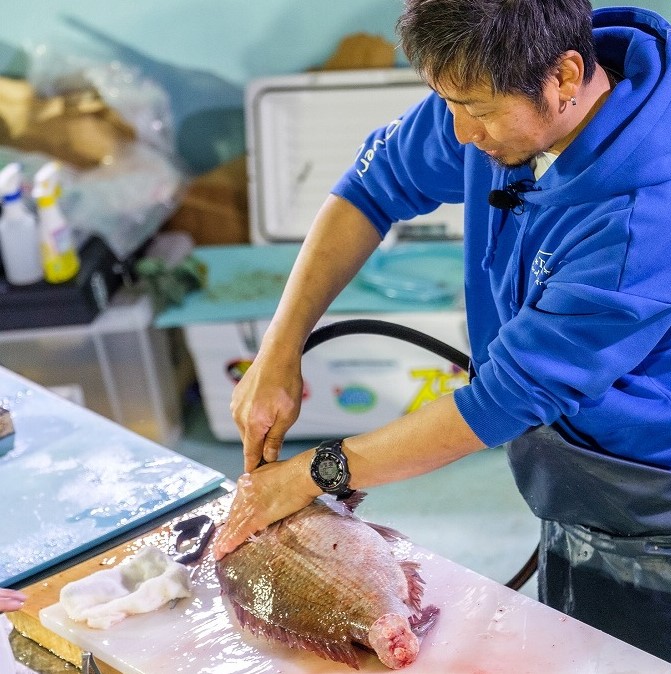
Mr. Tsumoto processing Hakuju-madai with Tsumotoshiki
Growing up in a fishing town, I also loved fresh fish, and all the fish I raised were shipped alive. I, however, realized how delicious aged fish can be when I met Tsumotoshiki.
It had a unique, sticky texture and concentrated flavor. Then I wanted you to know the euphoria I got when I ate hot, aged fish!
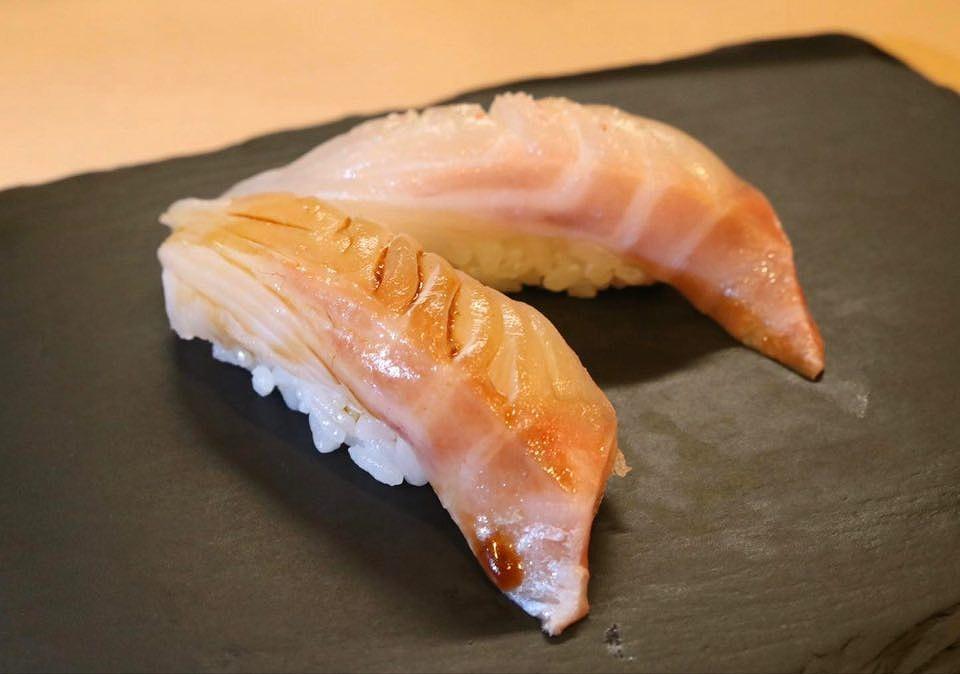
Hakuju-madai, aged for two weeks, served at Sushi-bar Nigirite, a famous restaurant for aged fish

Hakuju-madai roasted after a week of aging
How to Tsumotoshiki
Here is a simple explanation of how to do Tsumotoshiki in case of a 5.5 pound(2.5kg) Hakujumadai.
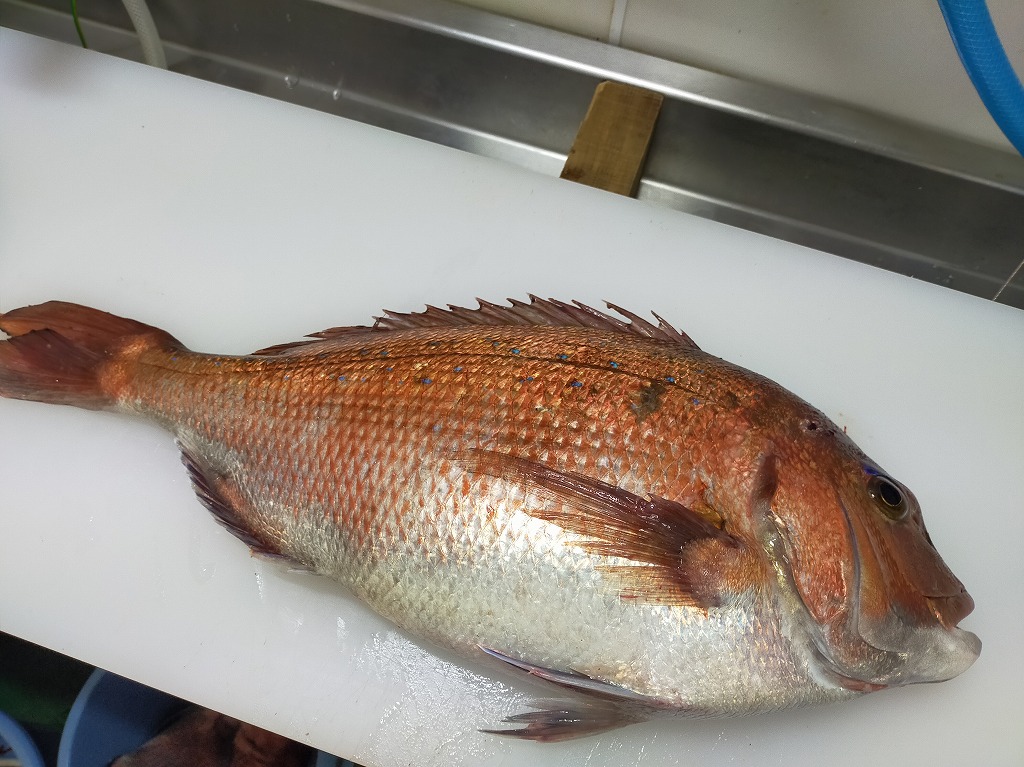
The required tools are a knife, a pressure-resistant hose with an inner diameter of 6 inches(15cm), a water shooter, and a stick to remove the kidney under the spinal column.

Water shooters and other products can be purchased at the official Tsumotoshiki store. (Unfortunately, no international shipping.)
1.First, stick the blade into the temple of the fish and promptly brain dead it.

2.To pump water into the fish, split the fish’s gill membrane and cut a slit in the artery under the spinal column. Then cut the spinal column between the end of the fish’s margin and the tail.

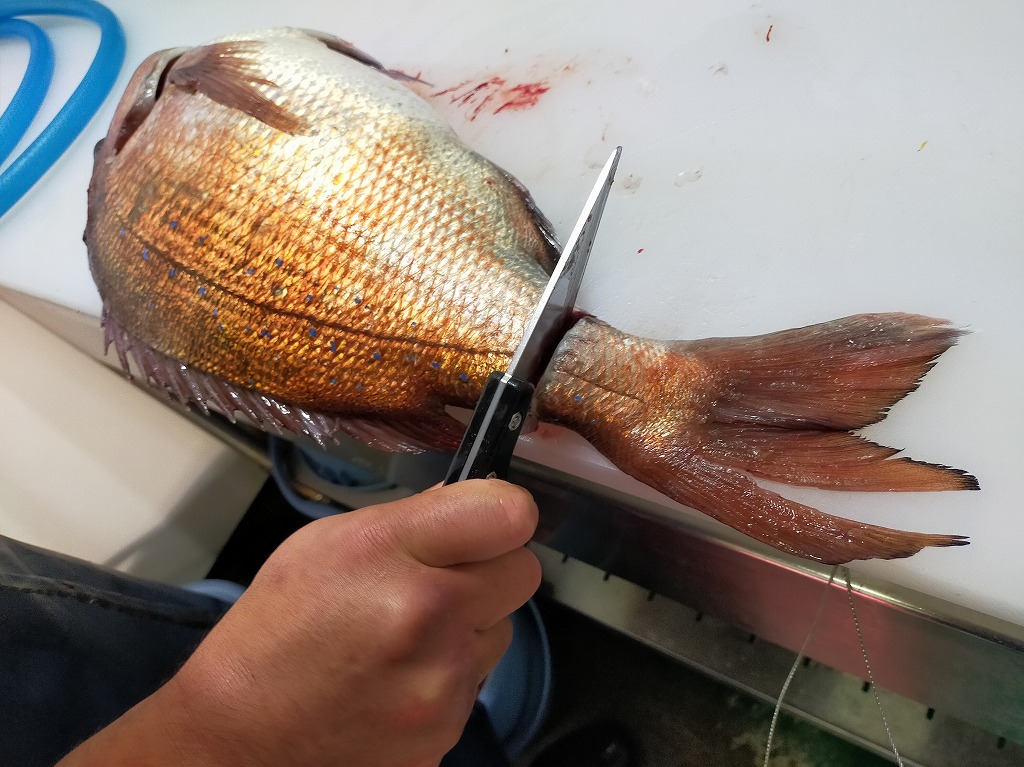
Make sure that the spinal canal and blood vessels are visible in the cross-section of the tail.

3.The nozzle of the water shooter is inserted into the spinal canal and blood vessels of the cross section, then pour water in them.
By filling the spinal canal with water, the nerves are ejected through the holes in the head. This process delays the loss of ATP, the source of flavor.

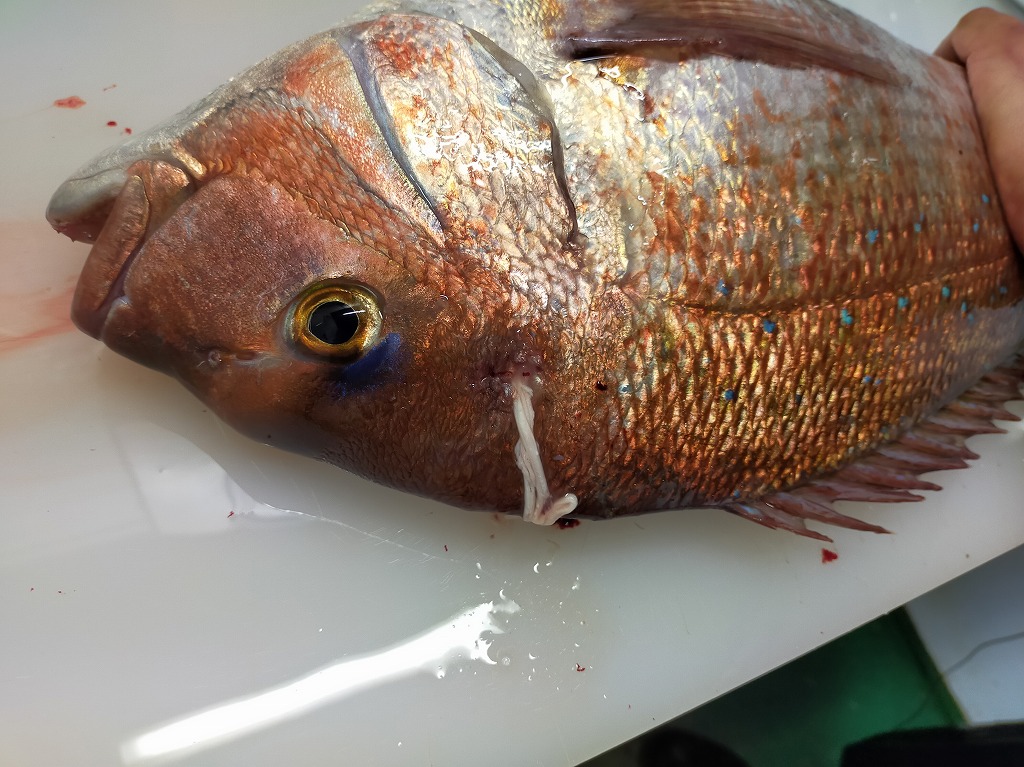

Stop the water injection into the blood vessel when the tail meat is taut (from 2 to 7 seconds).

4.Insert the hose into the hole made in the gill membrane in step 1, and let the water flow into the artery.
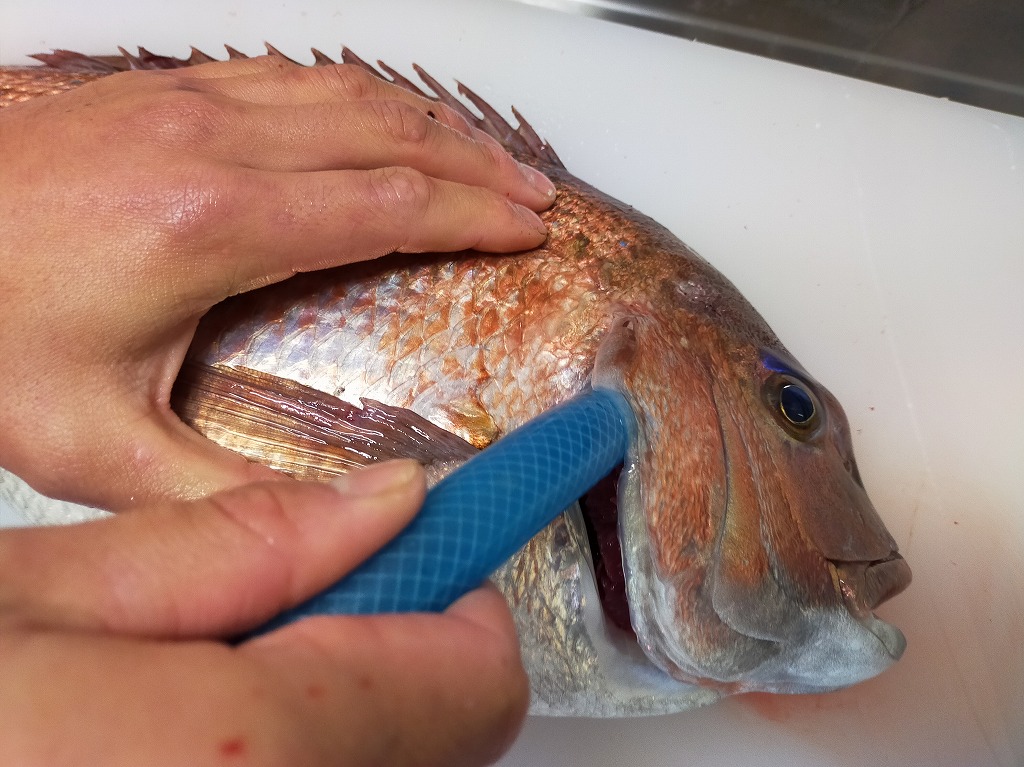
When you see the flesh on the top side of the fish is taut, stop pouring the water. (from 1 to 3 seconds)
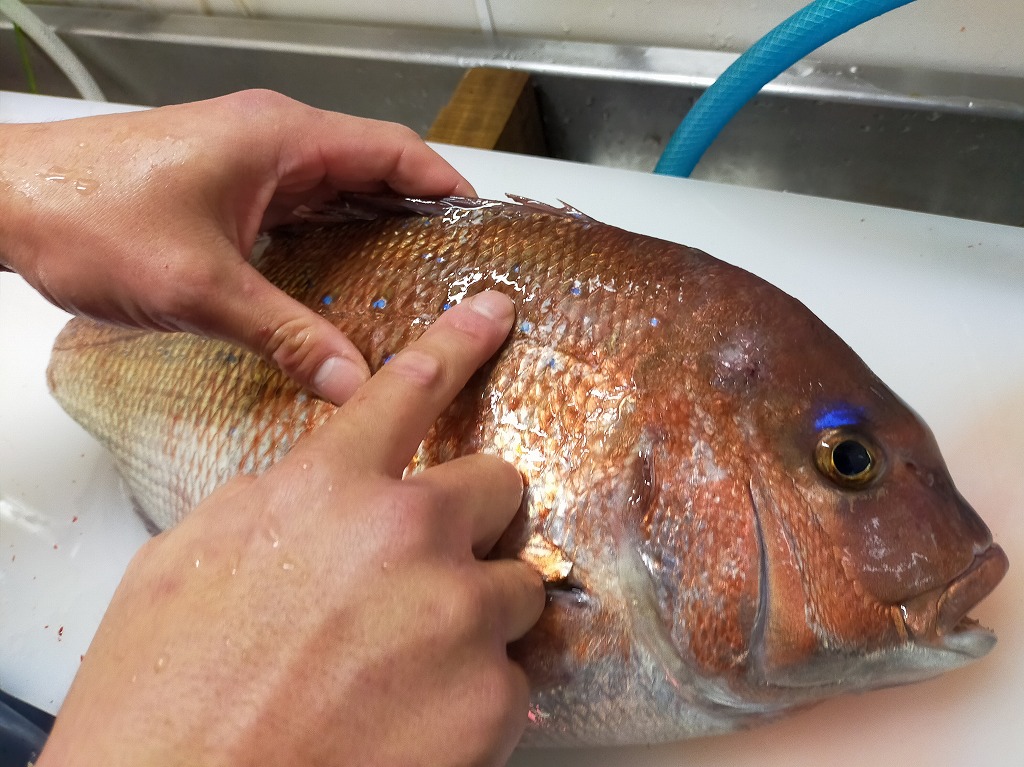
5.Remove the gills and internal organs of the fish.
Removal of gills
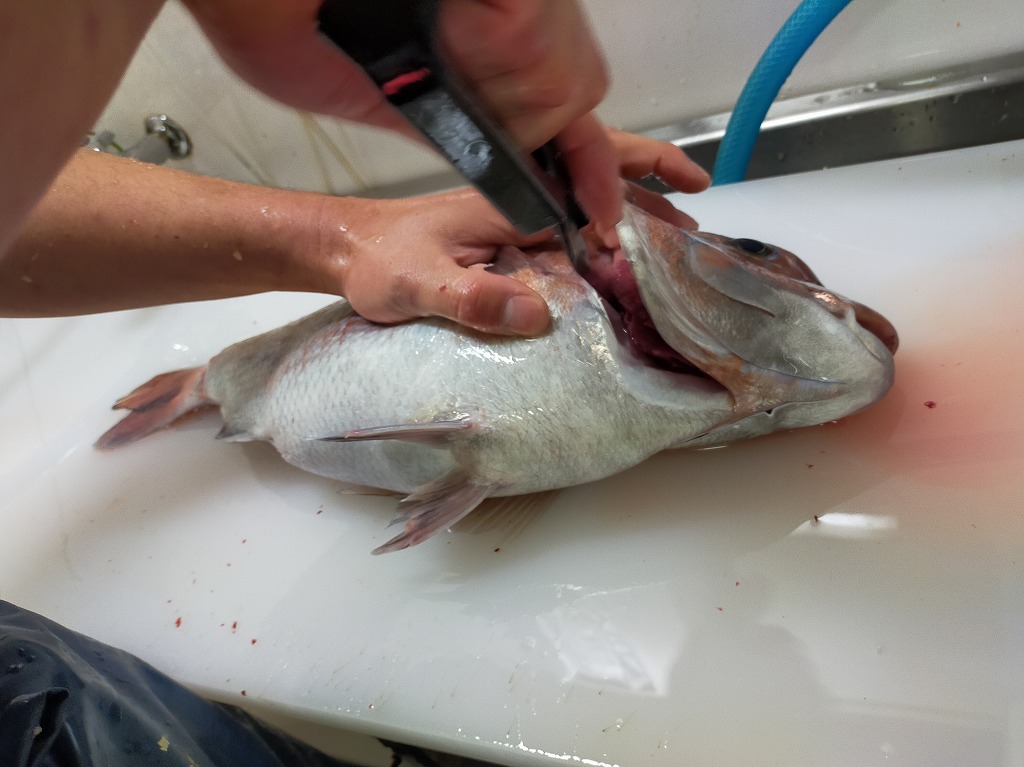
Removal of internal organs and kidneys under the spinal column.
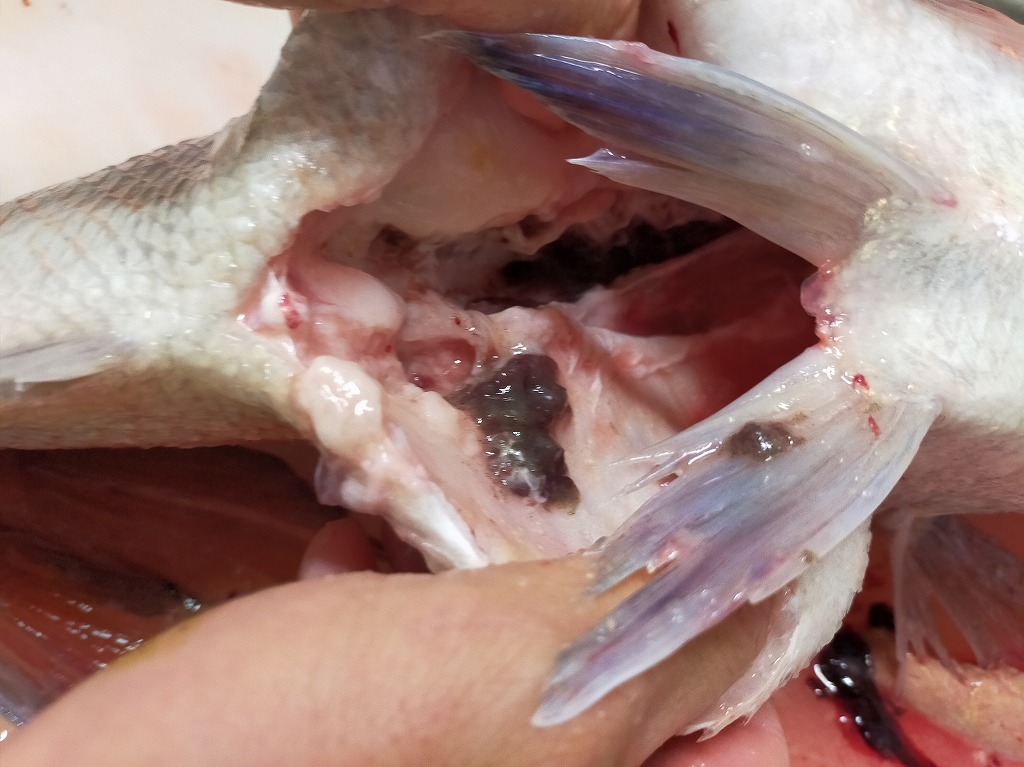


Complete the five steps up to this point within 90 seconds.
6.Finally, brush the surface of the fish to remove water and dehydrate it by standing it upright (15-25 minutes).
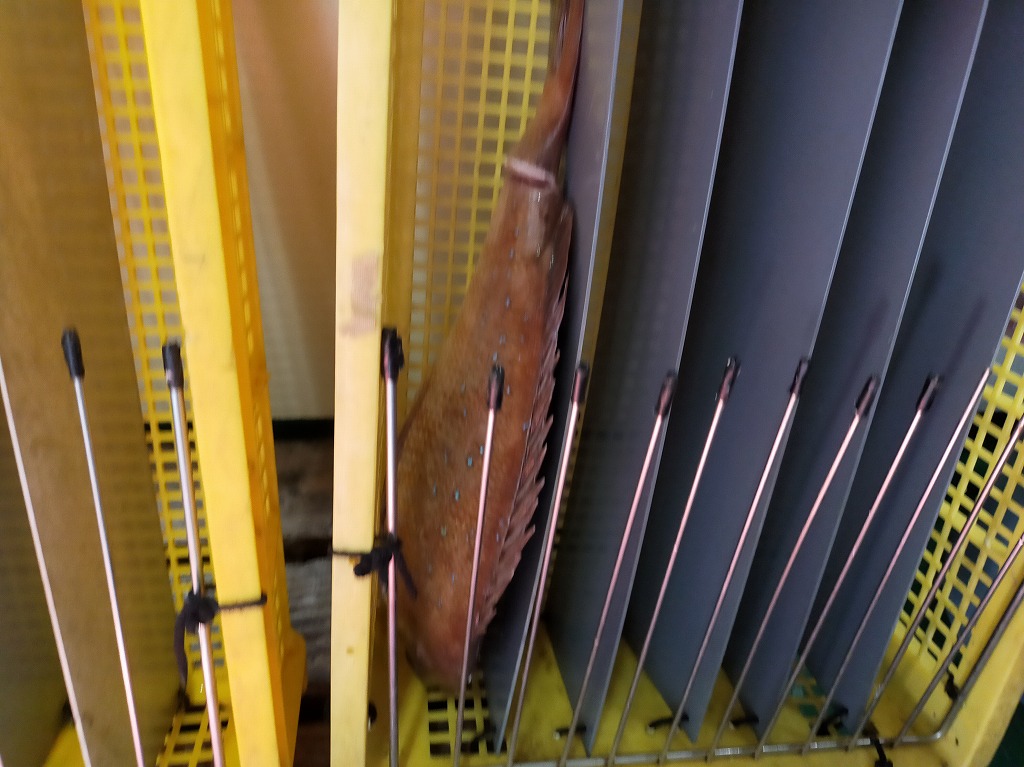
7.To store and ship this fish for a long time, wrap it with absorbent paper and water-resistant paper, then vacuum wrap it.
Store at a cool temperature (34-43℉(1-6℃)).
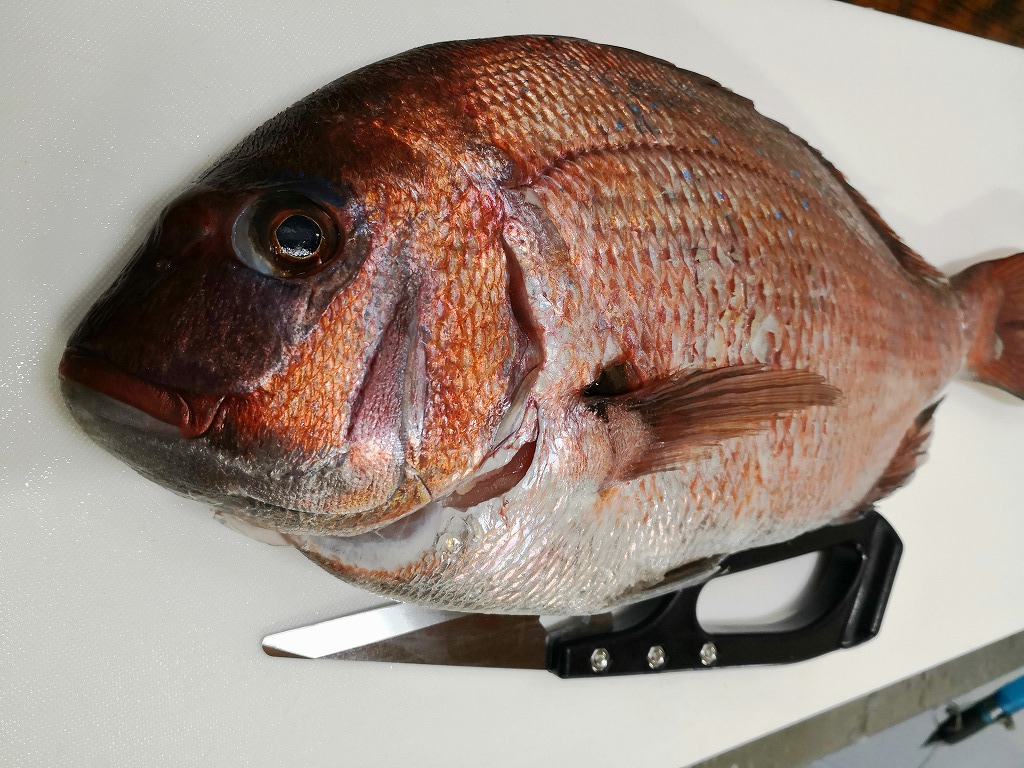
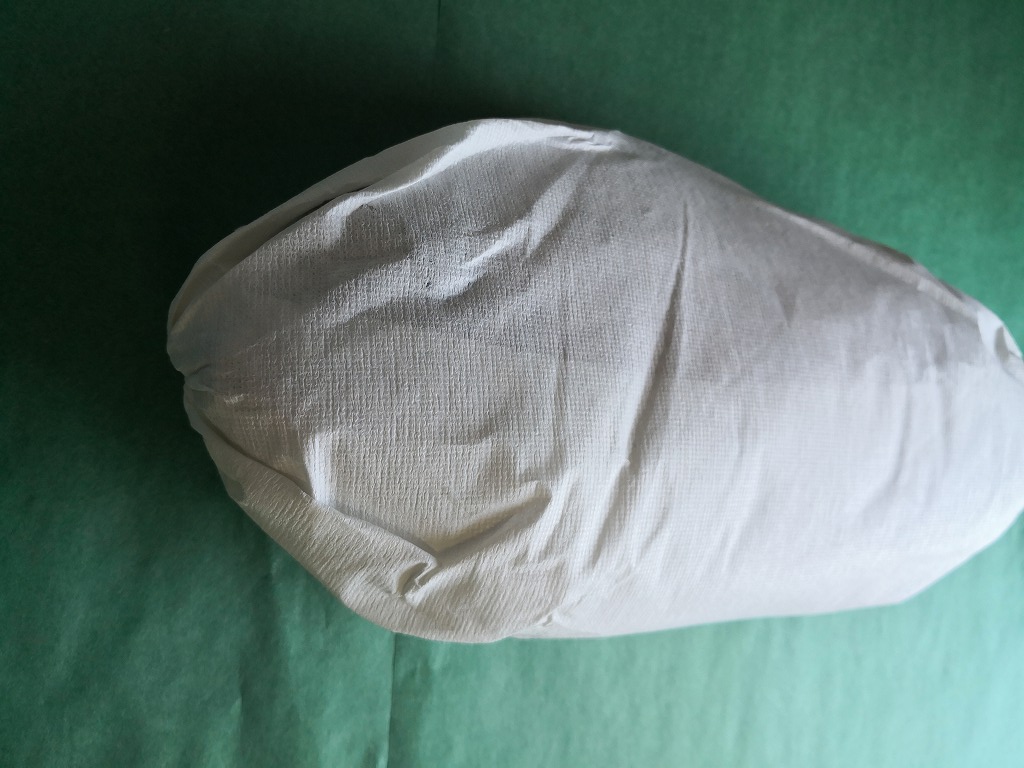
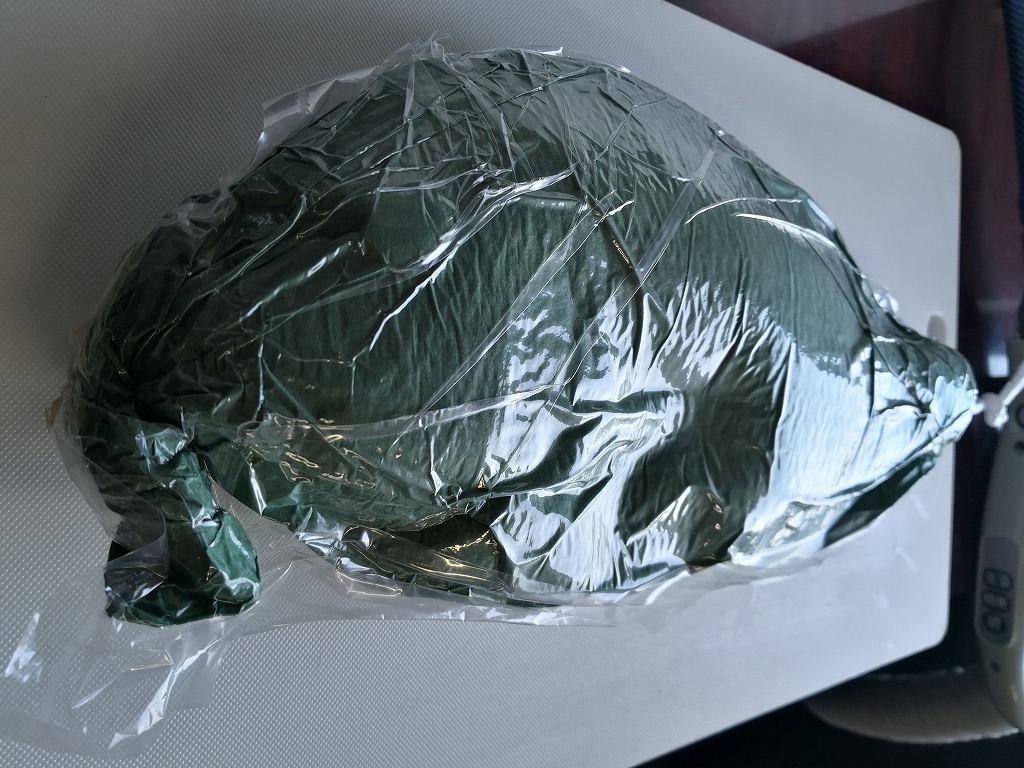
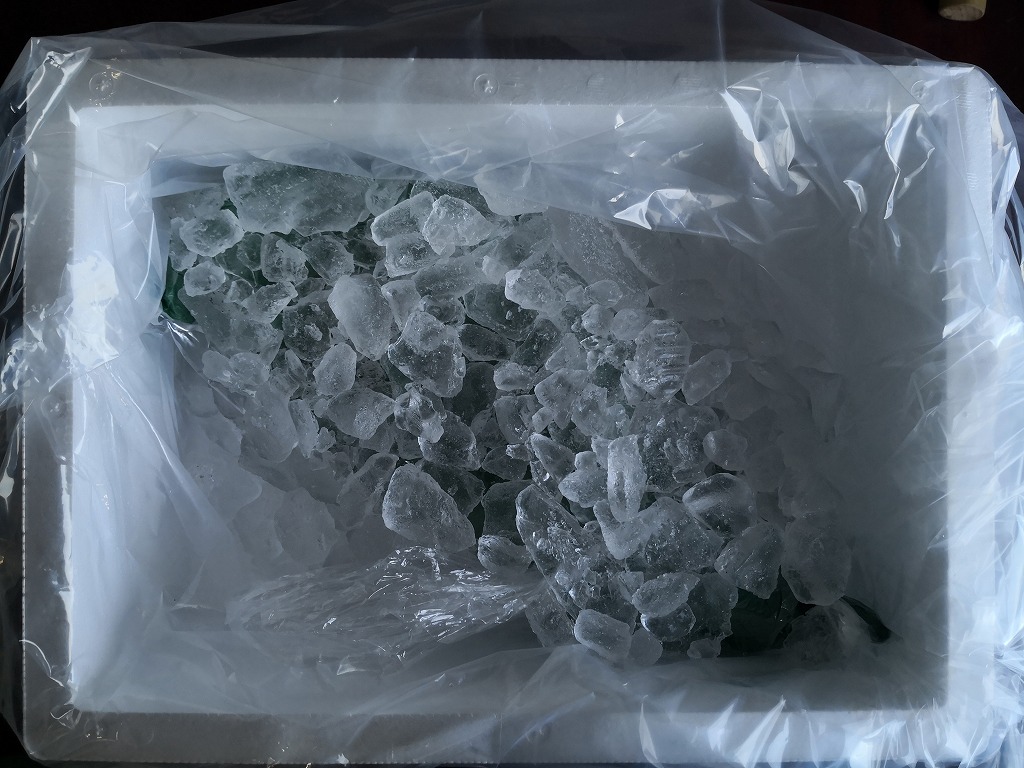
Why is Tsumotoshiki ideal for export?
I heard that it takes about five days from the time fish leave from Japan to the time it is ready to be eaten in American restaurants. After that much time, the value of the fish usually drops below that of the first day it was landed.
Fish processed with “Tsumotoshiki”, however, does not develop any odor or bitterness even after a week or more. On the contrary, its value increases and its flavor becomes richer and richer as it matures.
In addition, I heard that, In general, in other countries fish is often cooked hotter than in Japan.
Fish prepared with “Tsumotoshiki” goes well with dishes that are heated. We recommend cooking them into “seared” fish, which gives a sense of well-being, or “sea bream tempura,” which has a fluffy texture.
I would like to write about the aging way another time. Please give Tsumotoshiki’s aged fish a try.

